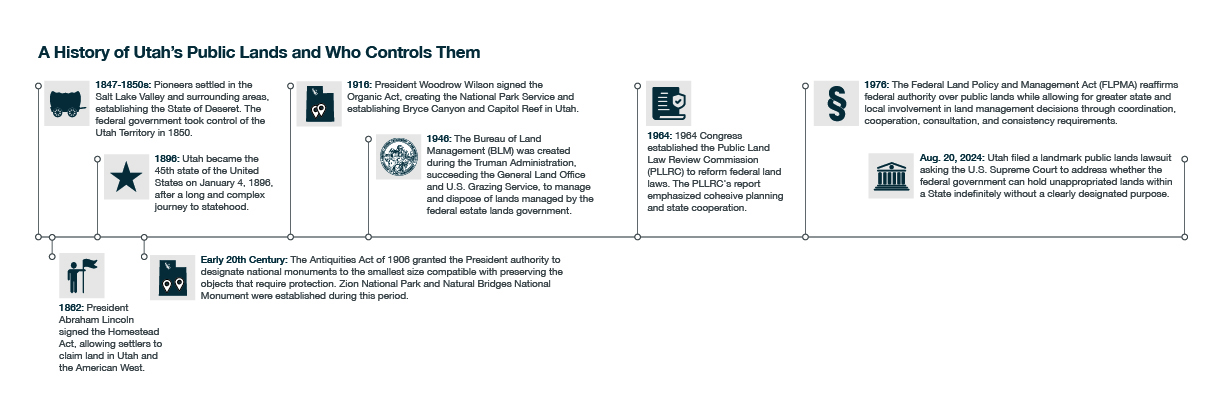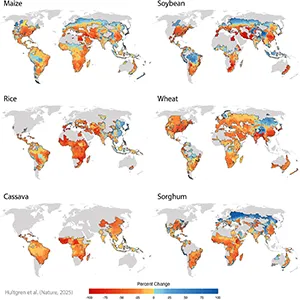BLM urges the public to help prevent wildfires – Bureau of Land Management (.gov)

Report on Wildfire Prevention and Alignment with Sustainable Development Goals in Wyoming
1.0 Executive Summary
This report outlines the current wildfire risk in Wyoming’s High Desert District, as communicated by the Bureau of Land Management (BLM). Due to persistent dry, warm, and windy conditions, the risk of rapidly spreading wildfires is elevated. The report details preventative measures for the public and frames these actions within the context of the United Nations Sustainable Development Goals (SDGs), highlighting the critical role of fire prevention in achieving global sustainability targets.
2.0 Wildfire Risk Assessment and Sustainable Development
The ongoing fire season presents a significant threat to environmental stability, community safety, and public health. These threats directly impact the progress toward several key Sustainable Development Goals.
2.1 SDG 15: Life on Land
Preventable wildfires pose a direct and severe threat to the integrity of terrestrial ecosystems. The BLM’s advisory underscores the need to protect precious natural resources on public lands.
- Wildfires destroy habitats, threaten biodiversity, and can lead to long-term land degradation and desertification.
- Protecting these lands through responsible public action is a fundamental component of safeguarding ecosystems, halting biodiversity loss, and ensuring the sustainable management of forests as mandated by SDG 15.
2.2 SDG 11: Sustainable Cities and Communities
The BLM warns that wildfires threaten lives and property. This aligns with the core objective of SDG 11 to make human settlements inclusive, safe, resilient, and sustainable.
- By preventing human-caused fires, communities reduce their vulnerability to disasters, protecting critical infrastructure and residential areas.
- Adherence to fire safety protocols is a direct contribution to community resilience.
2.3 SDG 13: Climate Action
The “dry and warm weather” cited as a primary risk factor is symptomatic of broader climate change trends. Wildfire prevention is a crucial form of local climate action.
- Large-scale wildfires release significant amounts of carbon dioxide into the atmosphere, exacerbating the greenhouse effect.
- Preventing these fires helps mitigate climate change by keeping carbon stored in vegetation and soil.
3.0 Public Directives for Wildfire Prevention
To mitigate these risks and support sustainability objectives, the BLM has issued specific guidelines for individuals recreating on public lands. The public is urged to adhere to the following protocols:
- Campfire Management: Never leave a campfire unattended. Before departing or retiring for the night, ensure the fire is completely extinguished and cool to the touch.
- Vehicle and Trailer Operation: When towing trailers or boats, ensure safety chains are properly secured to prevent them from dragging on the ground and creating sparks.
- Vehicle Parking: Do not park or drive any vehicle on tall, dry, or dead grass, as the heat from the vehicle’s undercarriage can ignite the vegetation.
- Recreational Shooting: Target shooting must be conducted in a clear area devoid of flammable materials. It is advised to have a fire extinguisher or water source present. The use of exploding targets and tracer ammunition is strictly prohibited on all public lands in Wyoming under year-round prevention restrictions.
4.0 Information and Compliance
It is the responsibility of all members of the public to remain informed and compliant with local regulations. Official information regarding fire restrictions and area closures is available at www.blm.gov/programs/public-safety-and-fire/wyoming/fire. All individuals venturing onto public lands are instructed to take these precautions and exercise extreme care with any potential ignition source.
1. Which SDGs are addressed or connected to the issues highlighted in the article?
The article on wildfire prevention in Wyoming’s High Desert District addresses several Sustainable Development Goals by focusing on the protection of natural ecosystems, public safety, and the underlying environmental conditions exacerbating fire risk.
-
SDG 15: Life on Land
This is the most directly relevant SDG. The article’s primary focus is on preventing wildfires to protect “public lands” and “precious resources.” Wildfires cause severe land degradation, destroy terrestrial ecosystems and habitats, and lead to biodiversity loss, all of which are central concerns of SDG 15.
-
SDG 11: Sustainable Cities and Communities
The article explicitly states that “preventable wildfires threaten lives, property.” This connects to SDG 11, which aims to make human settlements safe and resilient. Wildfires are natural disasters that can have devastating impacts on nearby communities, and preventing them is a key strategy for disaster risk reduction.
-
SDG 13: Climate Action
The article links the increased fire risk to prevailing weather conditions, such as “dry and warm weather,” “high temperatures, high winds and dry conditions.” These conditions are symptomatic of broader climate change patterns. The article’s message is an appeal for adaptive action to a climate-related hazard, which aligns with the goals of SDG 13 to strengthen resilience and adaptive capacity.
2. What specific targets under those SDGs can be identified based on the article’s content?
Based on the issues discussed, several specific targets can be identified:
-
Targets under SDG 15 (Life on Land)
- Target 15.1: By 2020, ensure the conservation, restoration and sustainable use of terrestrial and inland freshwater ecosystems and their services. The article’s call to action to prevent fires is a direct effort to conserve terrestrial ecosystems (“public lands”) in Wyoming’s drylands.
- Target 15.3: By 2030, combat desertification, restore degraded land and soil… and strive to achieve a land degradation-neutral world. Preventing large-scale wildfires is crucial to combating land degradation and desertification, as fires destroy vegetation and soil integrity.
- Target 15.5: Take urgent and significant action to reduce the degradation of natural habitats, halt the loss of biodiversity and… protect and prevent the extinction of threatened species. The article’s plea to protect “precious resources” implicitly includes the habitats and biodiversity that are destroyed by wildfires.
-
Target under SDG 11 (Sustainable Cities and Communities)
- Target 11.5: By 2030, significantly reduce the number of deaths and the number of people affected and substantially decrease the direct economic losses… caused by disasters. The article’s warning that wildfires “threaten lives, property” directly corresponds to this target, as the preventative measures aim to reduce the human and economic impact of fires as a disaster.
-
Target under SDG 13 (Climate Action)
- Target 13.1: Strengthen resilience and adaptive capacity to climate-related hazards and natural disasters in all countries. The article is a public awareness campaign designed to build public resilience. It educates citizens on how to adapt their recreational behavior (“stay cautious while recreating”) to the heightened risk of wildfires, which are a climate-related hazard noted in the article (“dry and warm weather persists”).
3. Are there any indicators mentioned or implied in the article that can be used to measure progress towards the identified targets?
The article does not provide quantitative data but implies several indicators that could be used to measure progress:
-
Indicators for SDG 15 Targets
- Number of preventable, human-caused wildfires: The article’s core message is about preventing human-caused fires. A reduction in the number of such fires annually would be a direct indicator of the success of the awareness campaign.
- Area of land burned by preventable wildfires: Tracking the acreage of public land damaged by preventable fires would measure progress in conserving ecosystems (Target 15.1) and preventing land degradation (Target 15.3).
- Implementation of wildfire prevention restrictions: The article mentions that “exploding targets and tracer ammunition are prohibited.” The existence and enforcement of such policies are indicators of proactive measures to protect land and habitats.
-
Indicators for SDG 11 Target 11.5
- Number of lives lost or injuries due to wildfires: Progress would be measured by a reduction in casualties from preventable fires.
- Economic losses from property damage due to wildfires: A decrease in the value of property destroyed by preventable fires would indicate progress towards this target.
-
Indicators for SDG 13 Target 13.1
- Implementation of public awareness campaigns: The article itself is an indicator of a local disaster risk reduction strategy. The reach and frequency of such communications (e.g., website traffic to the provided URL, media mentions) could be used to measure efforts to build public resilience.
4. Create a table with three columns titled ‘SDGs, Targets and Indicators’ to present the findings from analyzing the article.
| SDGs | Targets | Indicators (Implied from Article) |
|---|---|---|
| SDG 15: Life on Land |
15.1: Conserve and restore terrestrial and inland freshwater ecosystems.
15.3: Combat desertification and restore degraded land. 15.5: Reduce degradation of natural habitats and halt biodiversity loss. |
– Number of preventable, human-caused wildfires per year. – Total area (acreage) of public land burned by preventable wildfires. – Enforcement of wildfire prevention restrictions (e.g., ban on tracer ammunition). |
| SDG 11: Sustainable Cities and Communities | 11.5: Significantly reduce deaths, affected people, and economic losses from disasters. |
– Number of lives lost or injuries due to preventable wildfires. – Value of property damage caused by preventable wildfires. |
| SDG 13: Climate Action | 13.1: Strengthen resilience and adaptive capacity to climate-related hazards and natural disasters. |
– Existence and reach of public awareness campaigns on fire safety. – Implementation of local disaster risk reduction strategies (e.g., public information via websites). |
Source: blm.gov

What is Your Reaction?
 Like
0
Like
0
 Dislike
0
Dislike
0
 Love
0
Love
0
 Funny
0
Funny
0
 Angry
0
Angry
0
 Sad
0
Sad
0
 Wow
0
Wow
0


































































:quality(70):focal(289x270:299x280)/cloudfront-us-east-1.images.arcpublishing.com/shawmedia/H7NH74ZRH5CNJBTEBSN7OYFHL4.jpg?#)








